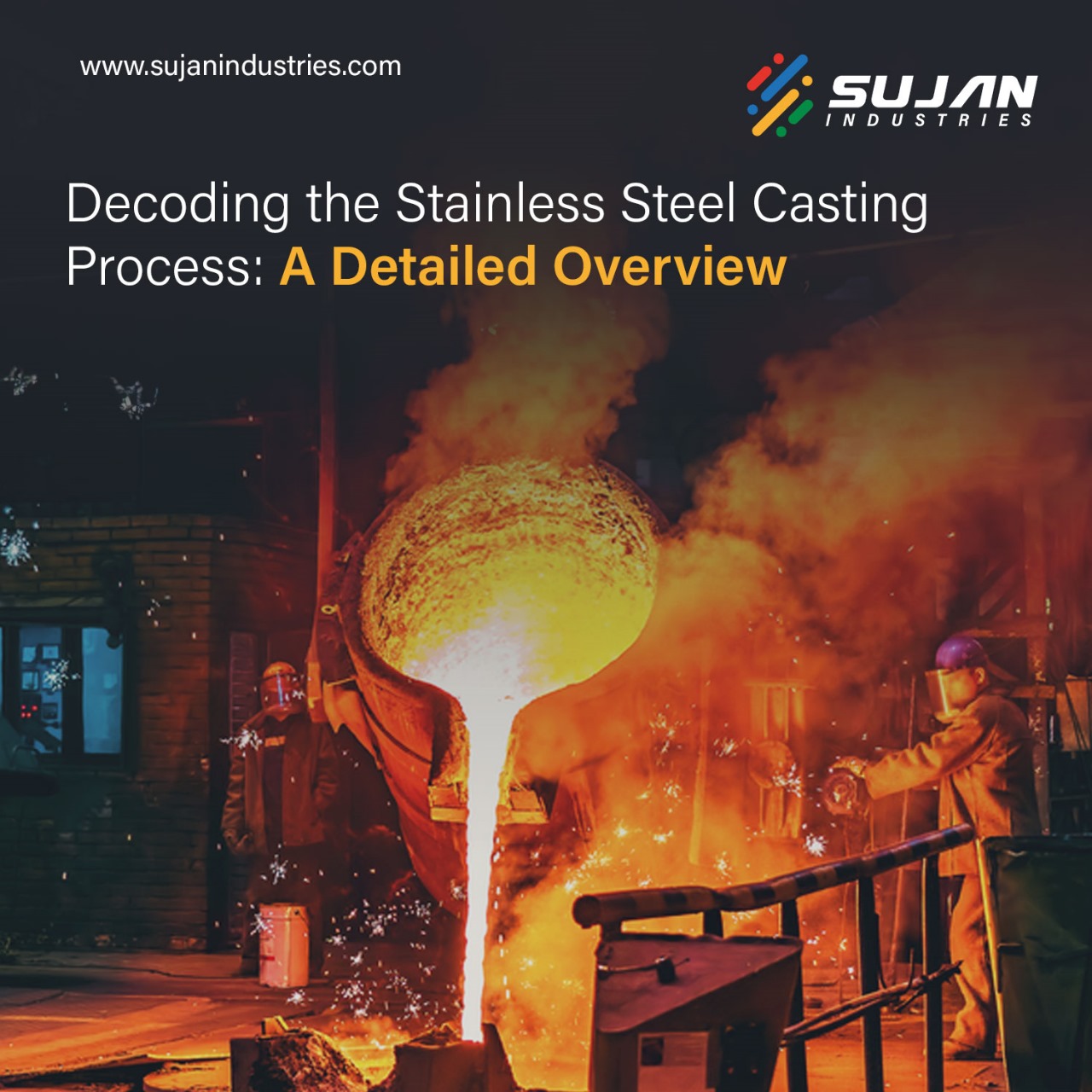
Stainless steel is renowned for its durability and resistance to corrosion, making it a preferred material in various industries, from construction to culinary arts. The stainless steel casting process is essential for shaping this versatile metal. It involves melting the steel into a liquid and pouring it into moulds to form specific shapes.
The versatility of stainless steel casting allows for the creation of complex and intricate designs that are both strong and aesthetically pleasing. This method is particularly important in industries where both the functional integrity and the visual appearance of the metal are crucial, such as in architectural elements or in surgical instruments. Furthermore, the non-reactive qualities of stainless steel make it ideal for applications involving harsh chemicals or extreme temperatures, enhancing its utility in a wide range of professional fields.
This blog will delve into the casting process and outline its critical steps, including mould preparation, melting and pouring, and finally, cooling and finishing.
Stainless steel casting is a manufacturing process that involves pouring molten stainless steel.
Into mould to produce parts with complex shapes. This technique is highly valued for its ability to create components that are both strong and corrosion-resistant. The primary benefits of stainless steel casting include excellent durability, high rust and chemical corrosion resistance, and the capacity to withstand extreme temperatures.
Common applications span various industries such as automotive, aerospace, medical and construction, where the integrity and longevity of materials are crucial. This versatility makes stainless steel casting a preferred method for producing high- quality, reliable parts.
Patterns are essential in the casting process, serving as the mould’s template. Typically made from materials like wax, they allow for easy replication of the desired metal object. The choice of wax is due to its ability to be easily shaped and removed after the mould is formed, ensuring accuracy in the final metal piece.
The mould preparation process begins with selecting suitable materials, often sand or a mixture of binders and refractories. The Pattern plays a crucial role here as it shapes the mold cavity. Once the Pattern is placed in the mold material, it is compacted to form a precise cavity that mirrors it. This cavity is what will eventually shape the molten metal.
The stainless steel casting process involves melting the alloy in a high-temperature furnace. Key considerations during this phase include achieving a uniform temperature and composition to ensure the integrity of the metal. The molten stainless steel is then carefully poured into the prepared mould, avoiding any turbulence to prevent defects in the final product.
After pouring, the metal begins to cool and solidify within the mold. Timing and temperature control are critical in this stage to ensure the metal solidifies evenly and to the desired specifications. Proper cooling is crucial to avoid internal stresses and potential cracks in the casting, ultimately determining the quality of the finished product.
Finishing processes are crucial in sand casting manufacturing to ensure that products have the desired aesthetic and functional qualities. Trimming is the first step, removing excess material from the sand casting process to refine the product’s shape. Sanding follows, smoothing the surface by abrading it with sandpaper or other abrasive materials. This prepares the surface for the final stage, polishing, which enhances the product’s shine and smoothness through chemical or mechanical means.
Additionally, manufacturers may apply post-cast treatments like heat treatments to enhance properties such as the strength or durability of the material. They can also use surface coatings to protect the product from corrosion, improve its appearance, or impart functional qualities like increased resistance to wear and tear. These processes collectively ensure that the product meets both functional specifications and aesthetic expectations.
Rigid testing ensures structural integrity and performance in casting quality control. Methods include visual inspections, X-ray imaging for internal defects, and ultrasonic testing to detect unseen flaws. Mechanical testing, such as tensile strength and hardness tests, further verifies the durability and quality of the cast products. These measures are critical for maintaining high standards in the stainless steel casting process.
Stainless steel casting involves melting the steel and pouring it into molds to form precise components. This process is crucial for producing parts that are strong, corrosion-resistant, and durable. It plays a vital role in modern manufacturing and engineering, enabling the creation of high-quality products and complex shapes essential for various industries.
Choose Sujan for stainless steel casting that epitomizes quality and durability. Our state-of-the-art foundry utilizes advanced manufacturing processes, ensuring each casting meets rigorous standards of strength and precision. With decades of expertise in steel casting, metal and rubber bonding, and automotive rubber parts manufacturing, we are steadfast in our commitment to innovation, providing tailored solutions that enhance performance across various industries. Trust Sujan to deliver not just products but also a lasting partnership.